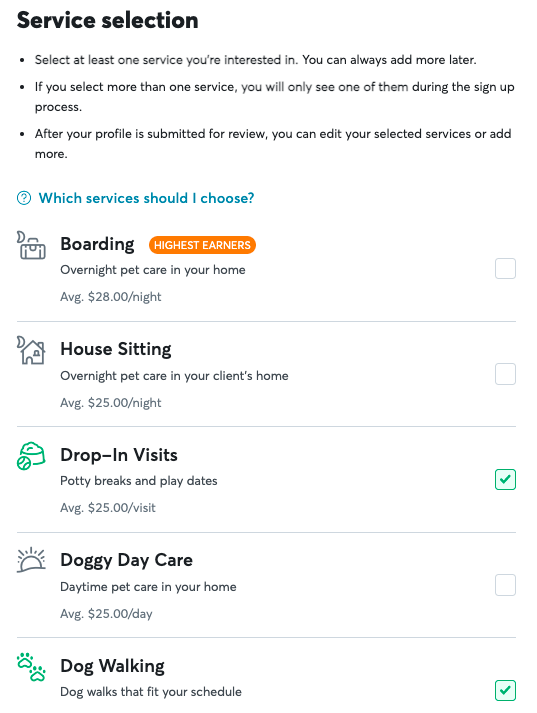To become a cat sitter, gain experience caring for cats, acquire pet first aid certification, and build a strong network of clients and referrals. Are you a cat lover looking to turn your passion into a profession?
Becoming a cat sitter can be a rewarding career choice for animal enthusiasts who want to care for feline friends. Whether you’re looking to start your own business or work for an established pet care company, this guide will provide you with the essential steps and tips to help you launch your cat sitting career.
From gaining experience and acquiring the necessary certifications to building a loyal client base, we’ll cover everything you need to know to embark on this exciting journey. So, let’s dive into the world of cat sitting and discover how you can turn your love for cats into a thriving business.
Getting Started
If you have a love for feline companions and want to turn that passion into a rewarding career, becoming a cat sitter might be the purrfect option for you. Not only does cat sitting allow you to spend time with adorable kitties, but it also provides a flexible schedule and the opportunity to make some extra income. If you’re ready to embark on this exciting journey, here are the first steps to take to become a cat sitter.
Researching Cat Sitting
Before diving headfirst into cat sitting, it’s important to conduct thorough research. Take the time to familiarize yourself with the ins and outs of cat care, behavior, and basic health requirements. Understand what is involved in cat sitting, such as feeding, grooming, administering medication, and providing playtime. Gain knowledge about various cat breeds and their individual needs. By doing your research, you’ll be well-prepared for any situation that may arise during your cat sitting adventures.
Identifying Your Skills and Qualifications
To become a successful cat sitter, it is crucial to identify your skills and qualifications. Reflect on your experience working with cats, whether it’s owning your own furry companion or volunteering at an animal shelter. Consider any relevant certifications or training you might have, such as pet first aid or animal behavior courses. Assess your scheduling flexibility, as cat sitting often requires you to accommodate different clients’ needs and offer availability during weekends and holidays. By identifying your strengths and qualifications, you’ll be able to market yourself as a reliable and capable cat sitter.

Credit: www.petsareinn.com
Gaining Experience
To become a cat sitter, gaining experience through caring for friends’ and family’s cats, building a positive reputation, and obtaining relevant certifications is essential. Networking with local pet owners and creating an online presence can also help attract potential clients for your cat sitting services.
Volunteering at Animal Shelters
To gain experience as a cat sitter, volunteering at animal shelters can provide valuable hands-on experience. You can learn about cat care, behavior, and handling from experienced staff.Working with Professional Cat Sitters
Collaborating with professional cat sitters allows you to shadow them, learn their routines, and understand the responsibilities involved in caring for cats. It’s a great way to gain practical knowledge. Gaining experience is crucial to becoming a successful cat sitter. Volunteering at animal shelters gives you direct exposure to cats and their needs. Working with professional cat sitters offers mentorship and practical insights.Also Read: How to Become a Notary Connecticut
Building a Network
Building a network in cat sitting involves connecting with pet owners and joining cat sitting platforms.
Connecting with Pet Owners
Offer your services to friends and family who have cats to expand your network.
Attend local pet events and engage with cat owners to promote your cat sitting services.
Joining Cat Sitting Platforms
Create profiles on popular cat sitting platforms like Rover and Care.com to reach a wider audience.
Write a compelling bio highlighting your experience and love for cats to attract potential clients.
Setting up Your Business
If you want to become a cat sitter, start by researching local pet sitting regulations and obtaining any necessary certifications. Create a business plan, set your rates, and create a professional website to attract clients. Network with local pet owners and businesses to grow your client base and provide excellent service to build a strong reputation in the industry.
Creating a Business Plan
When starting your cat sitting business, it’s essential to create a comprehensive business plan. This will serve as your roadmap for success, enabling you to outline your goals, strategies, and financial projections. A well-thought-out business plan will not only guide you but also come in handy if you plan to seek funding or partnerships.
A successful business plan should include:
- A compelling executive summary that highlights the key aspects of your business
- A thorough market analysis to identify your target audience and competitors
- A detailed description of your services, including the types of cat sitting you offer and your unique selling points
- A marketing and sales strategy to attract and retain clients
- A financial plan, including projected revenue, expenses, and anticipated profit margins
- Your organizational structure and the roles and responsibilities of your team
- An evaluation plan to monitor and measure the success of your business
Understanding Legal and Insurance Requirements
Operating a cat sitting business entails certain legal and insurance obligations that you must fulfill to protect yourself, your clients, and their beloved feline companions. It’s important to research and understand the specific requirements in your locality, as regulations may vary.
Here are some crucial legal and insurance aspects to consider:
| Legal Requirements | Insurance Considerations |
|---|---|
|
|
By understanding and fulfilling your legal obligations and securing adequate insurance, you can operate your cat sitting business with confidence and peace of mind.
Marketing Yourself
Building an Online Presence
When it comes to becoming a successful cat sitter, having a strong online presence is essential. Utilize social media platforms such as Facebook, Instagram, and Twitter to showcase your cat sitting services. Create engaging posts, share valuable tips about cat care, and use relevant hashtags to reach a wider audience.
Additionally, consider starting a professional website or blog to highlight your experience, services offered, and client testimonials. Ensure your website is user-friendly and includes a contact form for potential clients to reach out easily.
Utilizing Word-of-mouth Referrals
- Word-of-mouth referrals are a powerful marketing tool for cat sitters. Provide exceptional service to your clients, and encourage them to spread the word about your reliable and caring approach.
- Ask satisfied clients to leave positive reviews on your Google Business profile, as these reviews can significantly boost your credibility and attract new clients.
- Consider offering referral discounts or incentives to clients who refer their friends and family to your cat sitting services.
Managing Cat Sitting Assignments
Managing cat sitting assignments requires a thoughtful approach to establish clear communication and build trust with clients. This is essential for ensuring successful cat sitting engagements and providing peace of mind for both the cat owner and the cat sitter.
Establishing Clear Communication
Clear and open communication is vital for a successful cat sitting assignment. It’s important to discuss the cat’s routine, feeding preferences, playtime habits, and any medication needs with the owner before taking on the assignment. A well-organized communication plan helps in understanding the cat’s behavior, habits, and needs.
Building Trust with Clients
Building trust with clients is crucial for cat sitters. Providing regular updates and photos during the cat sitting period reassures the owners and strengthens the bond of trust. Being reliable, punctual, and showing genuine care for the cat’s well-being helps in nurturing a long-term relationship with the clients.
Delivering Quality Cat Care
Lorem ipsum dolor sit amet, consectetur adipiscing elit. Fusce mauris nisi, efficitur at bibendum sed, fermentum id magna. Phasellus lobortis tortor non diam suscipit, non ultricies leo laoreet. Nullam blandit nisl non sem fringilla, ac vestibulum nibh euismod. Donec non tortor sem. Curabitur sit amet orci ac tellus facilisis scelerisque. Ut vehicula purus non sem semper aliquet.
Understanding Cat Behavior
When taking on the role of a cat sitter, it is crucial to have a strong understanding of cat behavior. Cats are known to be independent creatures, so it is important to recognize their need for personal space and provide them with a safe environment. By observing a cat’s body language and vocalizations, you can identify signs of distress, anxiety, or discomfort. Understanding their behavior will enable you to build trust and establish a positive rapport with the cats you care for.
Providing Basic Medical Care
As a cat sitter, it is important to be prepared to provide basic medical care when necessary. While you are not expected to replace a veterinarian, being able to handle small medical issues can make a significant difference in a cat’s well-being. This includes administering medication, cleaning wounds, and monitoring general health. Always ensure you are familiar with a cat’s medical history and any specific instructions provided by the owner.
Moreover, it is essential to be aware of common cat health issues such as skin conditions, parasites, and digestive problems, as well as the appropriate steps to take in order to address these issues. In any situation where you are unsure or if a cat’s condition worsens, it is best to consult a veterinarian for guidance and further treatment.
To enhance your cat care skills, consider enrolling in a basic pet first aid course. This will equip you with the knowledge and confidence to respond promptly and appropriately to any emergencies or health-related concerns.

Credit: support.rover.com
Expanding Your Services
After establishing yourself as a successful cat sitter, it’s time to consider expanding your services to cater to a wider range of pet owners.
Introducing Additional Pet Services
Step up your game by offering additional pet services such as dog walking, bird feeding, or small animal care to attract more clients.
- Create a list of services you can offer besides cat sitting.
- Promote these services on your website and social media platforms.
- Highlight your expertise in various pet care areas to build trust.
Diversifying Your Clientele
Reach out to a broader audience by diversifying your clientele beyond just cat owners.
- Network with local pet owners and pet-related businesses.
- Partner with veterinary clinics or pet stores to expand your client base.
- Advertise your expanded services in community boards and pet-centric events.

Credit: wagwalking.com
Conclusion
Becoming a cat sitter can be a rewarding and enjoyable experience for any feline lover. By following these simple steps, you can establish yourself as a trusted professional in the field. Start by gaining knowledge about cat behavior and care, then create a strong online presence with a user-friendly website.
Promoting your services through social media and networking will help you attract potential clients. Always prioritize the well-being and happiness of the cats you care for, and remember that passion and dedication are key to success in this rewarding profession.
